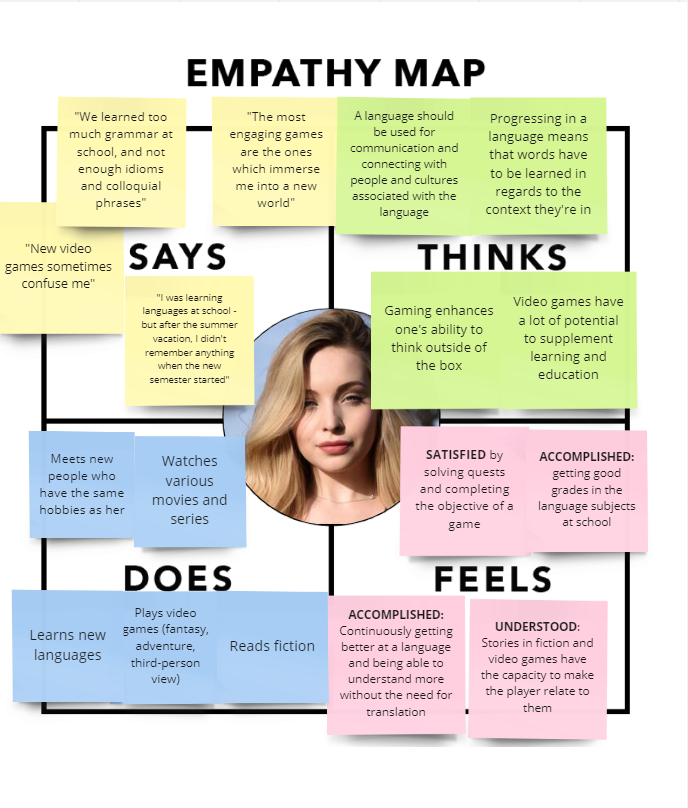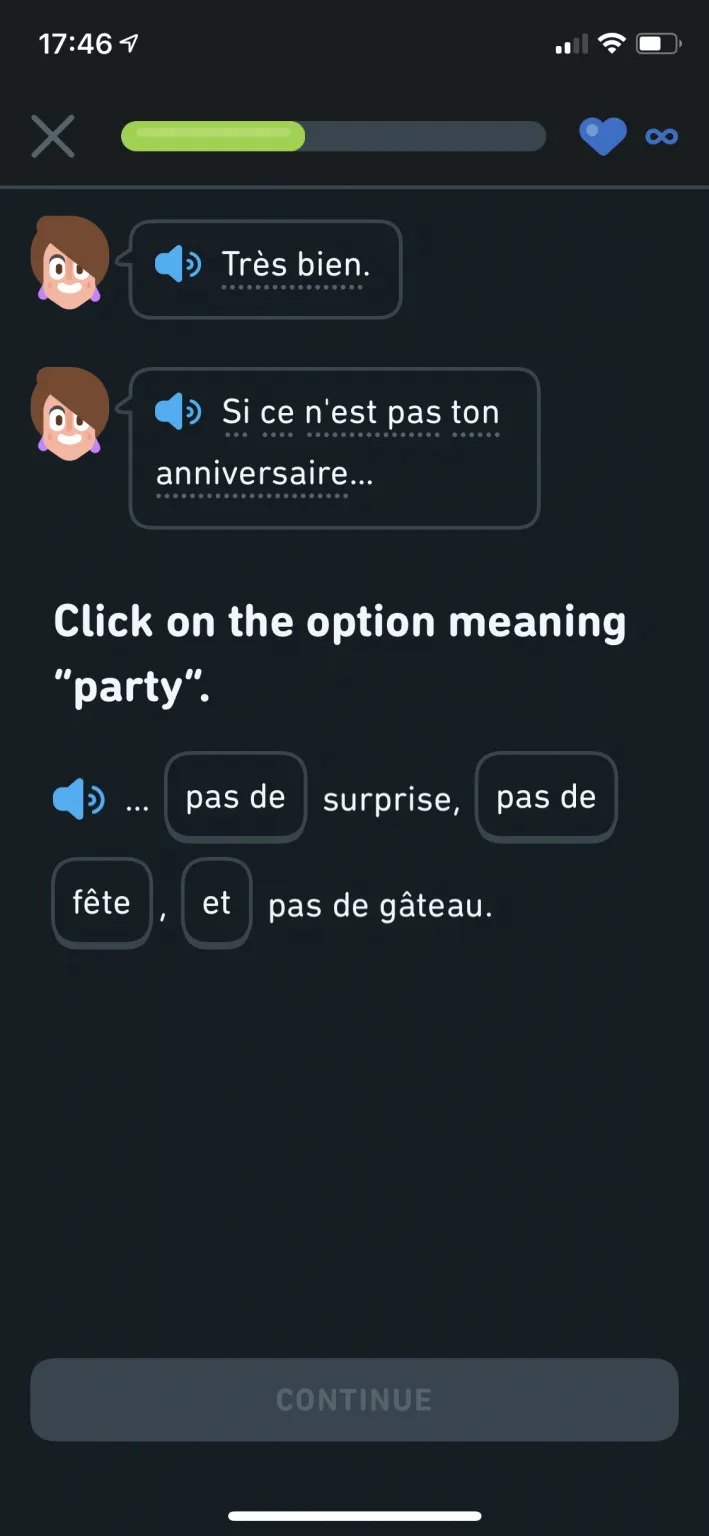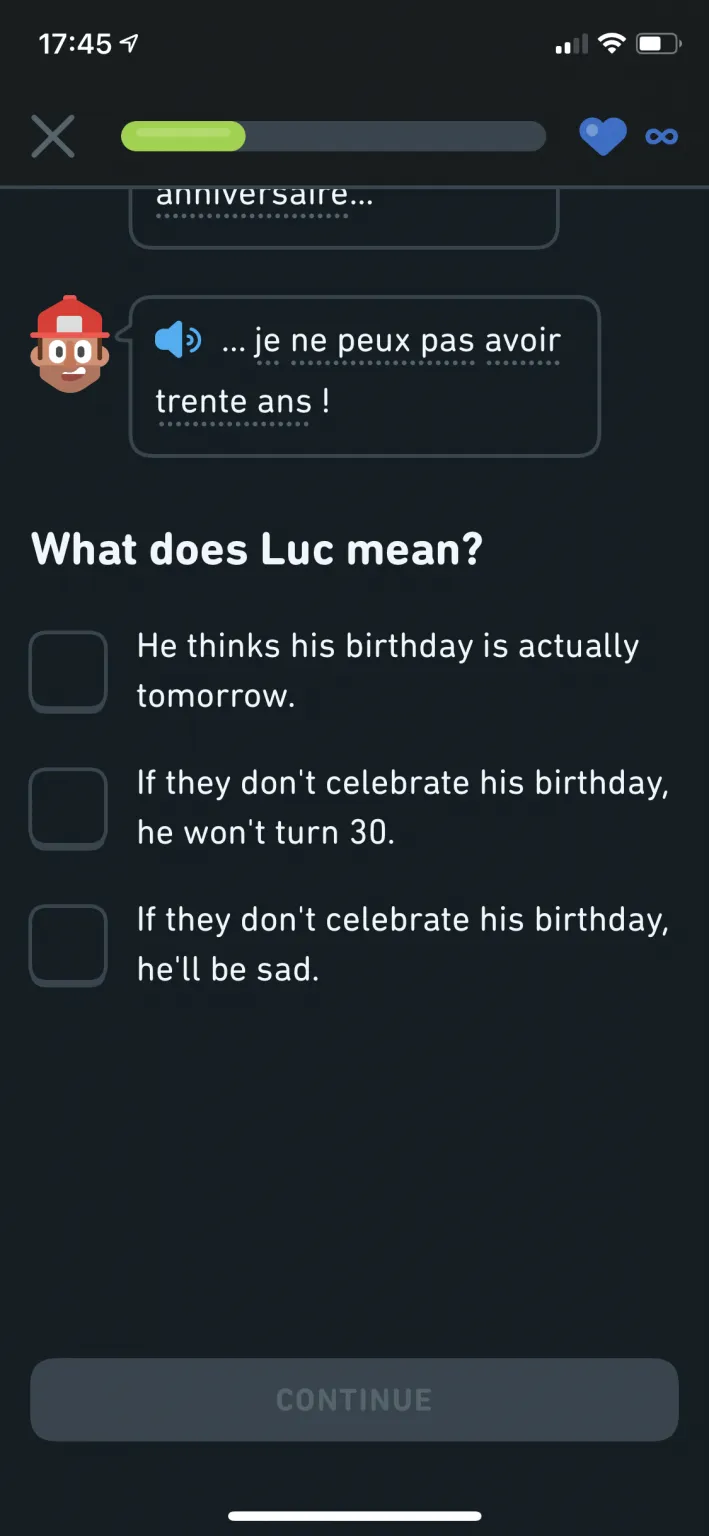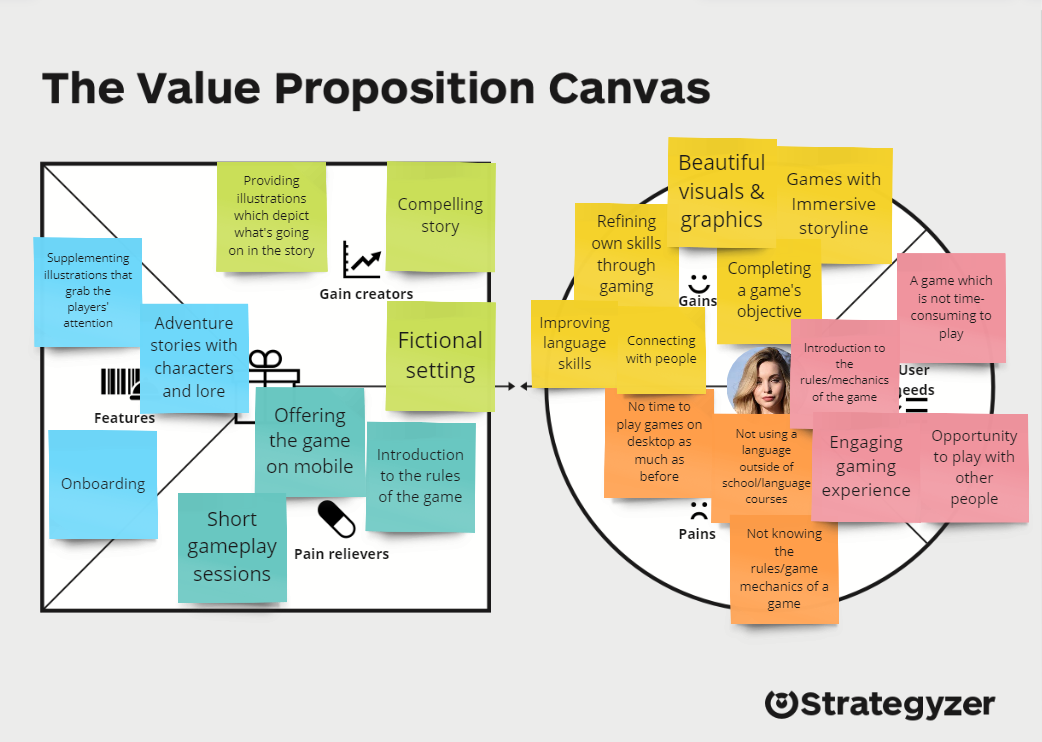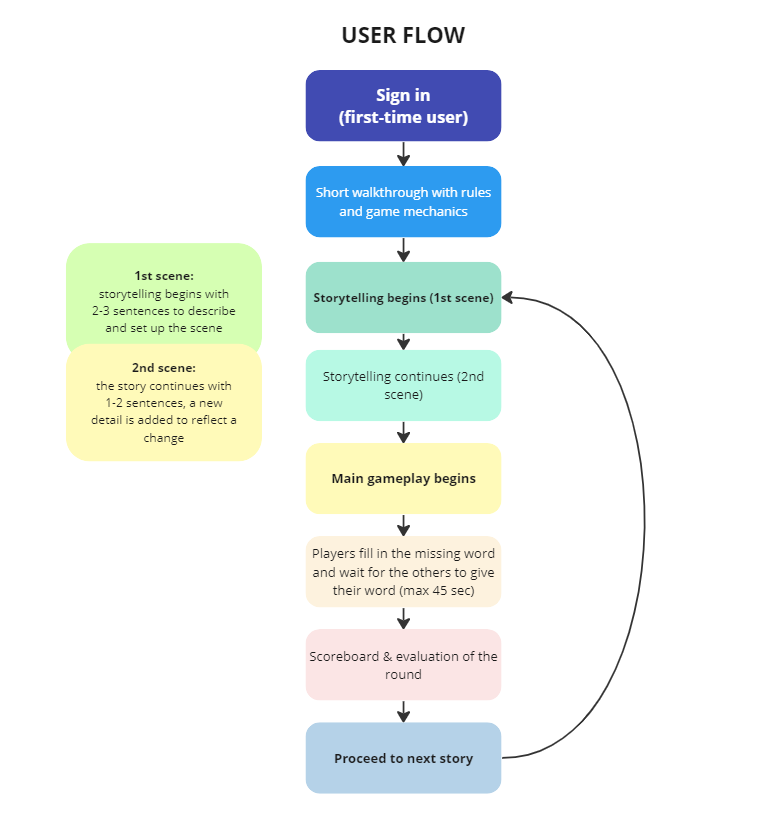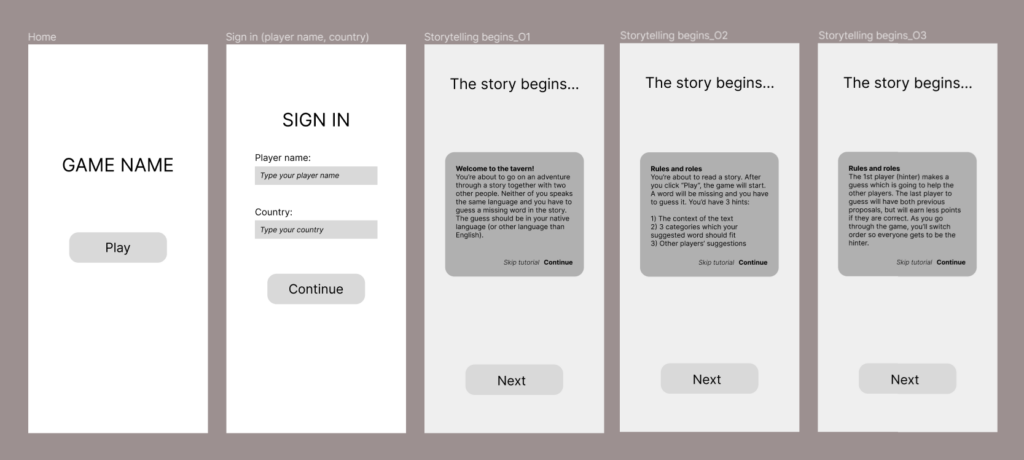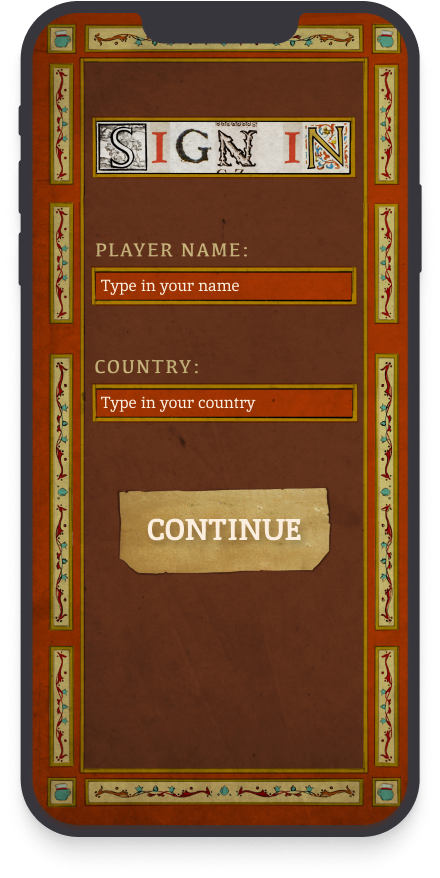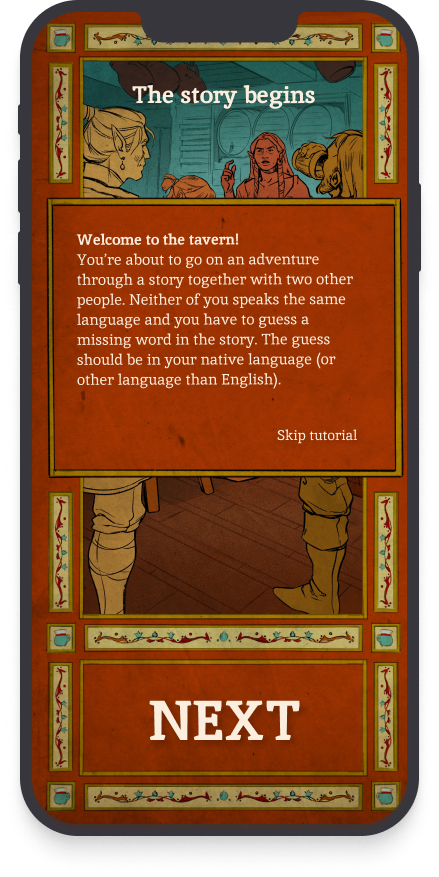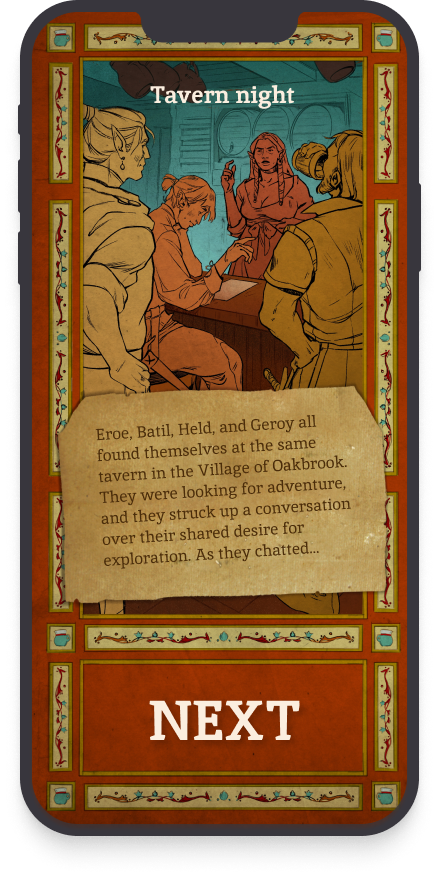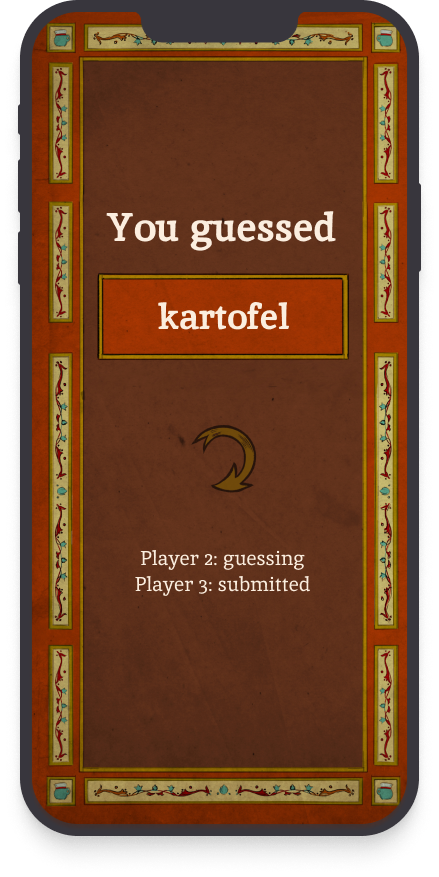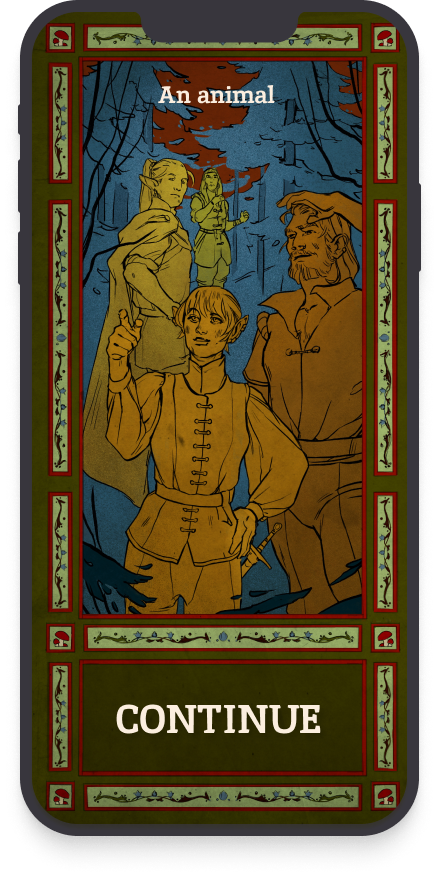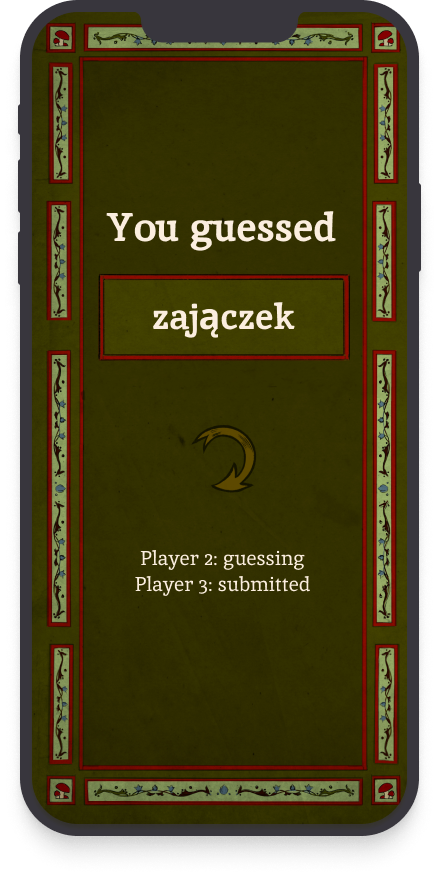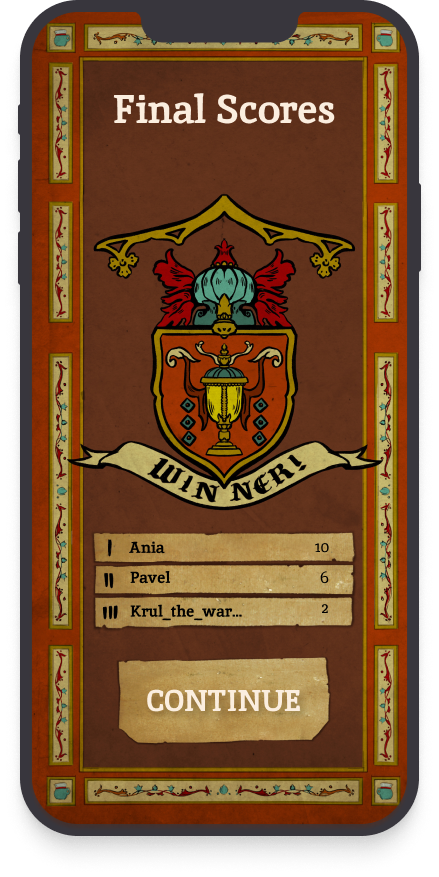Creating our own concept
Language loot is a concept for a language learning app that was developed during the game jam* of Game Changers – an Erasmus project which I participated in. I was part of a team consisting of 5 people who had different expertise within various areas – design, 2D art and coding being the most prominent ones. We had a total of 2 days to come up with a concept and develop it before we present it.
*Game jam an accelerated opportunistic game creation event where a game is created in a relatively short time frame exploring given design constraint(s) and end results are shared publicly.
Problem
Make a concept for a game which uses gamification elements that contribute to an engaging learning experience.
Our team's case
Our team decided to work on a case that tackled the learning process of studying foreign languages. Many students around the start learning English as soon as they begin school. But is it enough for someone to learn a language by the book to become fluent and confident in their language skills?
“How might we assist people in learning a language they’d like to speak?”
Goal
The goal of our project was to find out how to improve the process of learning a new language. Having the overarching problem and Game Changer’s purpose in mind, the solution had to be a game with an educational purpose.
My role
During the project, I, together with another UXer, took responsibility for the user research, defining the concept of the app as well as outlining the user journey. Our team collaborated in Figma where everyone was able to see the wireframes and understand the flow of the work process.
- UX designers – do research, define the concept, outline the user journey
- 2D artist – does the visuals, UI design
- Programmers – implementation
The design process - behind the scenes
Research
Diving into the problem
The first step was to find out what people’s experiences with learning a foreign language are as well as figure out their gaming preferences. We asked the interviewees questions such as:
- How, when and where did they begin studying a foreign language?
- How many languages do they know or have studied?
- What do they find interesting or boring about learning a language?
- How often do they play video games?
- What makes a video game fun?
- What are their favourite genres?
We took interviews with fellow participants in the Game Changer project. Our team was in good hands – there were representatives from over 10 countries and all of them were playing video games regularly. Everyone studied at least 1 foreign language and some of them even grew up speaking 2 languages – that gave us an abundance of different points of view.
Anna - a representative of our target group
Anna is a language enthusiast who often learns new languages and plays video games. She wants to be able to get by when she travels, explore new cultures, see movies and read fiction in their original language, and connect better with her online friends she’s made through the years.
In her free time, Anna likes playing games and enjoys discovering new worlds and fascinating stories – either in the game or in the form of fiction. And when it comes to her gaming experience, she likes a challenge – the most enjoyable games contain a storyline and a challenge which helps her improve her skills.
Anna likes learning new language for the opportunities they bring and enjoys playing video games for the stories and challenges.
Understanding Anna - empathy map
Anna’s attitude, opinions, feelings and thoughts related to video games and languages are summed up with an empathy map. Both gaming and learning languages are hobbies which she enjoys and devotes a lot of time to.
For Anna, languages are a means of connecting better with different people and cultures. When she travels, language helps Anna to get by, and on her way back, she often brings books with her. She’s also made online friends from different countries and often tries to communicate with them in their language.
Video games allow Anna to discover and immerse herself in new worlds. She enjoys fantasy and adventure stories and loves solving quests. Anna really values games through which she can learn something new. Anna thinks that gaming has a lot of potential to supplement learning and education. She feels satisfied when she completes the objective of a game.
Define & Ideate
Fun, engaging and interactive learning for everyone
The purpose of the Game Jam was to come up with a game which incorporates a learning aspect in it. During our research, we identified that learning languages could be difficult if it’s only done “by the book” and the language is not used outside of the classroom. We therefore decided to set on and explore how we can come up with a game that supplements learning foreign languages.
Language Loot engages the players by giving them adventure stories which train their linguistic abilities. The game provides a multiplayer opportunity – you can either play with friends or meet new people.
We took inspiration from Duolingo’s stories. But while Duolingo provides stories for individual learning, Language Loot is multiplayer (images source: duoplanet)
To make the game work, we had to come up with a concept for the story as well as work on the game mechanics and rules. This part of the process wasn’t necessarily easy – but together, we came through it with an idea which aligned the team and motivated us to work on something exciting.
During our process, we took inspiration from Duolingo’s stories – in some languages, players can read/listen to short anecdotes and guess words/phrases within the context of a sentence. We all really liked how Duolingo does that, and we agreed that it makes sense to guess words based on a given context.
Language Loot has stories (written in English) in which the players have to guess the missing word based on the context of the story, as well as hints about the word. The players can guess the word in any language other than English. The purpose of the game is to exercise the skill to guess and understand words based on the context they’re placed in, as well as connect people who like learning languages.
Value proposition
Upon analyzing Anna’s user needs, pains and gains we concretely defined the features of the game and how Language Loot can create value for her. With the Value proposition canvas, we found out how to provide a delightful user experience which makes Anna happy and excited to play.
Here are our main takeaways:
Necessary features
- Adventure stories with lore and characters
- Illustrations that depict the story and captivate the players’ attention
- Onboarding that explains the mechanics and rules of the game
Gain creators
- Fictional setting
- Compelling storyline with plot development
- Providing aesthetically pleasing visuals & graphics which supplement the story
Pain relievers
- Introduction to the rules and mechanics of the game
- Offering the game on mobile
- Short gameplay sessions
MoSCoW analysis
With the project lasting for only two days, we had limited time and had to prioritise what we’re going to work on. So even though we had a lot of ideas of what the game could include, we had to decide on a few things we’re going to work on. That way, we could guarantee that the main points and most important aspects are presented. We used a MoSCoW analysis to help us decide on what’s going to be represented in our prototypes and how.
- Must have: core features and requirements for the game. Onboarding, compelling story setting with beautiful supplementary visuals and an evaluation of result & scoreboard are what Language Loot mainly consists of
- Should have: additional to add after we’ve covered the “must have”. More chapters (aka different settings and scenarios), refined icons and buttons designed to fit the aesthetic and translated words at the end of each turn would add more value to the game and user experience
- Could have: Would be considered if we had more time to work on the project. Avatar icons and character selection as well as a user profile and “add friends” feature would be an excellent ways to allow the users to express themselves and make them feel like they’re part of a community
- Won’t have: desktop version, using AI in the game to generate parts of the story and getting a different ending with different points are complex to execute and we’d need more research to determine their value
User flow
After prioritizing the features, it was time to map out the user flow. The user flow helped us make a sequence and order in the game and matches which the players would play. Moreover, the user flow is also a prerequisite to sketching and wireframing how the solution would look like.
As seen, if it’s a first time player, they’d need to first sign up, and afterwards they’d go through a quick walkthrough that explains the game rules and mechanics.
After that, the actual game begins. The story is being set, and there’s a brief explanation of where the players are and what’s going on. Besides text, there’s also supporting illustrations.
Consequently, the match begins. The players read a prompt, and they have to fill in the word that’s missing. They have 45 seconds before time runs out. Afterwards, points are given and the round gets evaluated to see who got the most.
Story setting
During our research we found that storytelling captivates the players. Games which have a lore, universe of their own and characters who play a part in the story offer a unique gameplay. Therefore, we spent a considerable amount of time brainstorming on the story and characters in the game.
And so we decided: our game is going to follow the adventures of 4 friends named Eroe, Batil, Held and Geroy (their names mean “hero” across various languages). A single gameplay would contain 3 acts and will follow through the adventure of the characters in the story. They would go through different scenarios and besides the story, there would also be supporting visuals which aim is to delight the player and enhance the gaming experience.
Prototyping
Wireframing
For first time users, the game begins with a sign up and initial onboarding. During the sign up, players would get to choose the name they’d like to use in the game, and state where they’re from. Since the game is about languages and connecting to people, without any borders, that’s meant to signal the language and culture which they’re coming from and can tell others about.
In the initial onboarding, a short introduction is given to the game rules and mechanics, so that the players know what’s about to happen; skipping the tutorial is also an option.
Here the wireframes reflect the userflow we agreed upon: the storytelling begins and sets the scene before the actual game starts. Once the game starts, players can write the word by clicking on the empty space – they’d get a prompt where they can write the word which they want to answer. Then, they’d submit it and before being evaluated, they’d get a status screen which shows how far the other players are in giving their suggestions.
Mockups
After making the user flow tangible, we had our 2D artist work on the UI design and elements of the game. The stories in Language Loot are fictional, and the world which we settled for is in medieval times. As you will see, the design of the game depicts and reflects this choice, making it possible for the player to fully immerse themselves in the atmosphere.
If you’re curious to try out our prototype yourself, you can check it out here 🙂
Presentation and feedback
As part of the GameJam, each team presented what they have worked on during the last day of the project. Whether on paper or digital, all of the teams succeeded in making concepts for games which incorporate a learning element as part of the user experience.
Our project sparked interest, and everyone could understand what is the point of it – some people were even eager to try out the game if we continued to develop it. There were discussions about what we could do if we are to further develop it, and we received constructive feedback in regards to the technical aspect of it, and how to incorporate AI.
Reflections and learning
Whew! We came so far in 72 hours!
I learned so much in such a short time. It’s amazing what we can do if we join forces together – this is the first project where I’ve worked with people who have different expertise and background than mine. Even though it was confusing at the beginning, we found a way to work together to make something awesome. I’m proud of the result! Besides developing my soft skills, I think I also put my concept development skills I’ve acquired during my education to explain how our solution is going to bring value. I managed well in the UX role by conducting research and outlining the user journey of the players.
Of course, things can always be better. We could have done testing to find out what works and not in our solution, and what we can do to improve it. Given more time, we could have also defined the concept even better and come up with the features listes in “Could have” from the MoSCoW analysis.
But that was all enough for the time. I’m so thankful for the experience and the our amazing team that developed the concept for Language Loot 🙂

